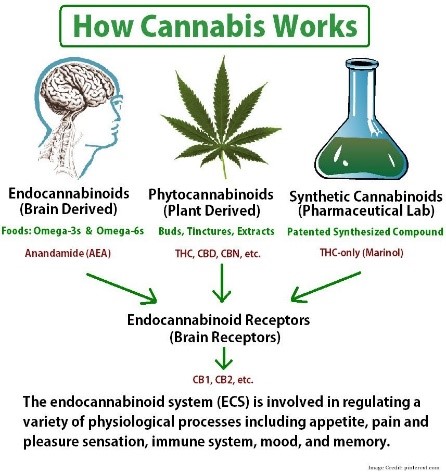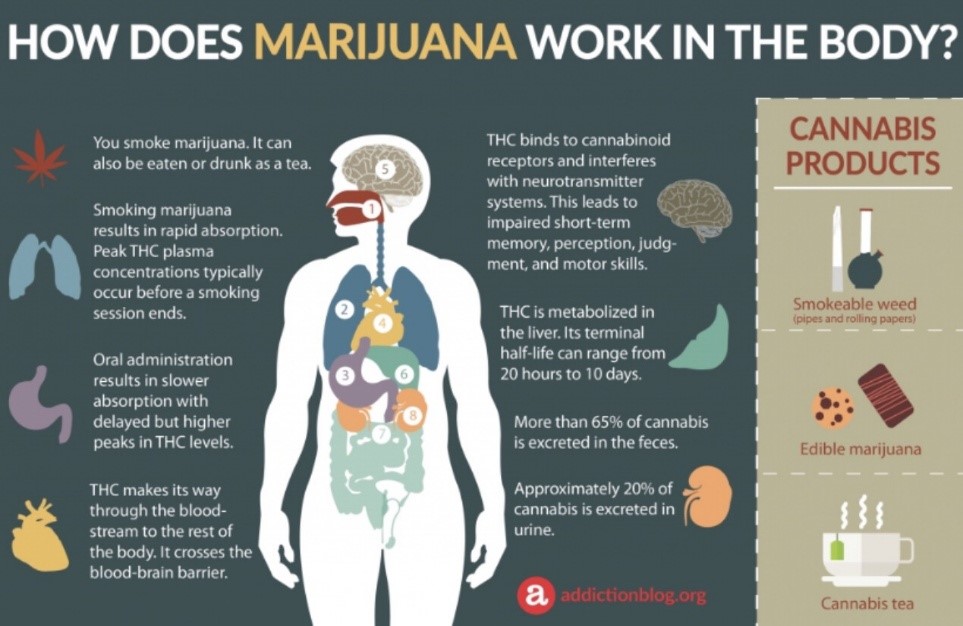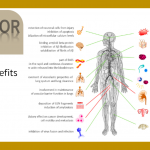Medical Cannabis
Medical cannabis is a new type of medicine because marijuana is not a panacea or a current medicine. Currently, the world does not choose to use cannabis as a primary treatment. On the other hand, patients who are eligible to receive cannabis. Those do not respond to other drugs or receive unacceptable side effects. While only a handful of medical cannabis products were registered officially. However, it still needs to meet quality standards. For this reason, government regulators often manage the medical cannabis needs of patients and physicians following product safety, quality, and efficacy requirements. Therefore, although clinical data and medication dispensing guidelines are needed, reliable information to support the development of policies and decisions of government officials is equally important.
How can cannabinoids work in the body?
Determining how the drug will work in each patient's body is very important for the safety and effectiveness of the drug. The distribution of cannabinoids THC and CBD in the body (Pharmacokinetics) vary depending on the method of taking the drug, the duration of the action will depend on the dose, dosage form, and methods of medication, either through the lungs, mouth, intestines, or skin.
Absorption and distribution
Most THC and CBDs found in marijuana are in the form of inactive acids, so heat is needed to remove the carboxyl group for THC and CBD to be active. In practice, this process is called "decarboxylation" by heating the hemp flowers in a steamer or heating the hemp flower extracts before putting them in the solution.
Absorbing the cannabinoids inhaled by the vapor will result in the highest concentration in the blood within a few minutes. The effect on the brain begins to show within seconds to a few minutes and will work at the maximum after 15-30 minutes, which will end in 2-3 hours.
The ingestion of the cannabinoids slows down the absorption. The maximum concentration in the blood is smaller and occurs slower when swallowed. The effect on the brain is slowing down for 30-90 minutes and maximum effectiveness after 2-3 hours and effect between 4-12 hours.
Bioavailability is to specify the drug proportion that enters the circulatory system after medication. The bioavailability of THC and CBD when oral administration is low. Inhalation of cannabinoid vapors is more effective and more reliable when compared with oral administration.
THC and CBD are fat-soluble compounds (well adhered to fat) that are absorbed through the lungs rapidly, resulting in easier inhalation of vapors and a quick administration method for drugs. It makes titration easier to adjust the desired dosage and get the desired biological effect. Approximately 25% of inhaled THC enters the circulatory system.
The distribution of cannabinoids in the body is determined by binding to fat (Fat solubility of substances) and binding to blood proteins. THC will spread throughout the body, especially in fat tissue. The accumulation of THC in the body will increase, according to the frequency and increased duration of using substances.
Metabolic processes and excretion
Most of the cannabinoids have metabolized by using a liver enzyme called cytochrome P 450 (CYP450) like other drugs. This enzyme can change the chemical substance of cannabinoids to remove substances from the body (excretion). Besides, the liver, other tissues such as the heart and lungs can carry the cannabinoid substance through the metabolic process. Even though it can be done to a lesser degree than the metabolic processes of THC and CBD have a similar way.
Drug elimination is the removal of drugs from the body completely. Metabolic processes have the primary method of removing THC from the body, while CBD has excreted without any chemical changes within 5 days after taking one dose. THC has excreted about 80-90%. The excretion of THC and it's metabolites occurs through feces and urine after inhaling the vapor. Approximately 25% of the substance has excreted through urine and 65% through feces. Only a small amount of THC has excreted without chemical changes. Oral medication less than 5% was found to have no chemical changes in the feces. Metabolites of THC have found in urine and feces for weeks.
The removal of cannabinoids and metabolites slowly occurs because these substances move slowly from the body's fats and other tissues into the bloodstream.
Liver metabolism and THC processes
Metabolites are substances created during the metabolism process, which product extracted after swallowing the medicine. The drug is absorbed in the small intestine and taken to the liver before going through the metabolism that is called the metabolic process in the liver. The metabolic processes in the liver dramatically reduce drug concentration, which causes only a small amount of the original medicine to enter the circulatory system. In some cases, Metalite may be powerful and long-lasting. For THC, Metrolite 11-hydroxy THC (11-OH-THC) has a double effect on psychoneurosis than THC. The administration of THC by inhalation of the vapors will avoid the process of liver metabolism and conversion to 11-OH-THC rapidly.
Disease and conditions in using medical cannabis products
- Medical cannabis products are beneficial because there is clear academic evidence of supporting quality including;
- Chemotherapy induced nausea and vomiting
- Difficult to treat epilepsy and intractable epilepsy
- Spasticity in patients with multiple sclerosis
- Neuropathic pain
- Medical cannabis products should benefit. (To control the symptoms)
This type of cannabis product has limited quality academic evidence that requires research information to support it.
Diseases and conditions of diseases in this group such as
- Patients receiving palliative care
- End-stage cancer patients
- Parkinson's disease
- Alzheimer's disease
- Generalized anxiety disorders
- Other demyelinating diseases such as neuromyelitis optica and autoimmune encephalitis
Dosage, dosage preparation forms, and titration
Medical cannabis is like any other drug that has a variety of drug preparations such as;
• Inhalation of vapors, such as medical vapors, smoking.
• Oral dosing, such as oil, spray, capsules, tea or solution, food.
• Transdermal drug delivery.
To meet the needs of different patients, physicians usually advise dosage adjustments to get the desired results to find the most appropriate daily dosage. Which helps patients to get good results and reduce adverse reactions to a minimum.
Contraindications and side effects
These substances should not be used in pregnancy, lactation, and psychiatric patients. For use with patients who have heart disease and blood pressure should be closely monitored. This group of substances shouldn’t combine with CNS depressants. The adverse effects of THC depending on the suitability and dosage, which should be started at a low dose first, and if it is necessary to increase the dose slowly. People receiving this group of substances can develop the body to accept the psychoactive effect of the drug (tolerance) quickly. Thus, the dosage should be maintained to be stable and based on the treatment results received.
In general, patients are resistant to the effects of medical cannabis very well. The side effects are usually only for a short time. They are also less harmful and disappear when more resistant to drugs. Most side effects occur after receiving large amounts of medical cannabis or combination with other substances, which tend to occur after use quickly.
Indicate sign adverse reactions include;
● Dry mouth.
● Conjunctivitis.
● The increased appetite (Which may be desirable side effects).
● Mild euphoria.
● The arousal of the user decreases, especially in the hours immediately after receiving the drug.
● Increased heart rate.
● Blood pressure drops and dizziness.
Usually, all side effects will gradually decrease and disappear within a few hours, depending on the dosage received and the method of medication.
References
ดร. ภญ. ผกาทิพย์ รื่นระเริงศักดิ์. (2562). กัญชากับการรักษาโรค. แหล่งข้อมูล: https:// pharmacy.mahidol.ac.th/th/knowledge/article/453/กัญชา. ค้นเมื่อวันที่ 3 มิถุนายน 2563.
Martin Woodbridge. (2562). ข้อมูลเบื้องต้นเกี่ยวกับกัญชาทางการแพทย์. แหล่งข้อมูล: https://mdresearch.kku.ac.th /files/cannabis/MedicainalCannabisBook_v4.pdf. ค้นเมื่อวันที่ 3 มิถุนายน 2563.



 ไทย
ไทย  繁體中文
繁體中文  العربية
العربية  Português
Português  Español
Español 















